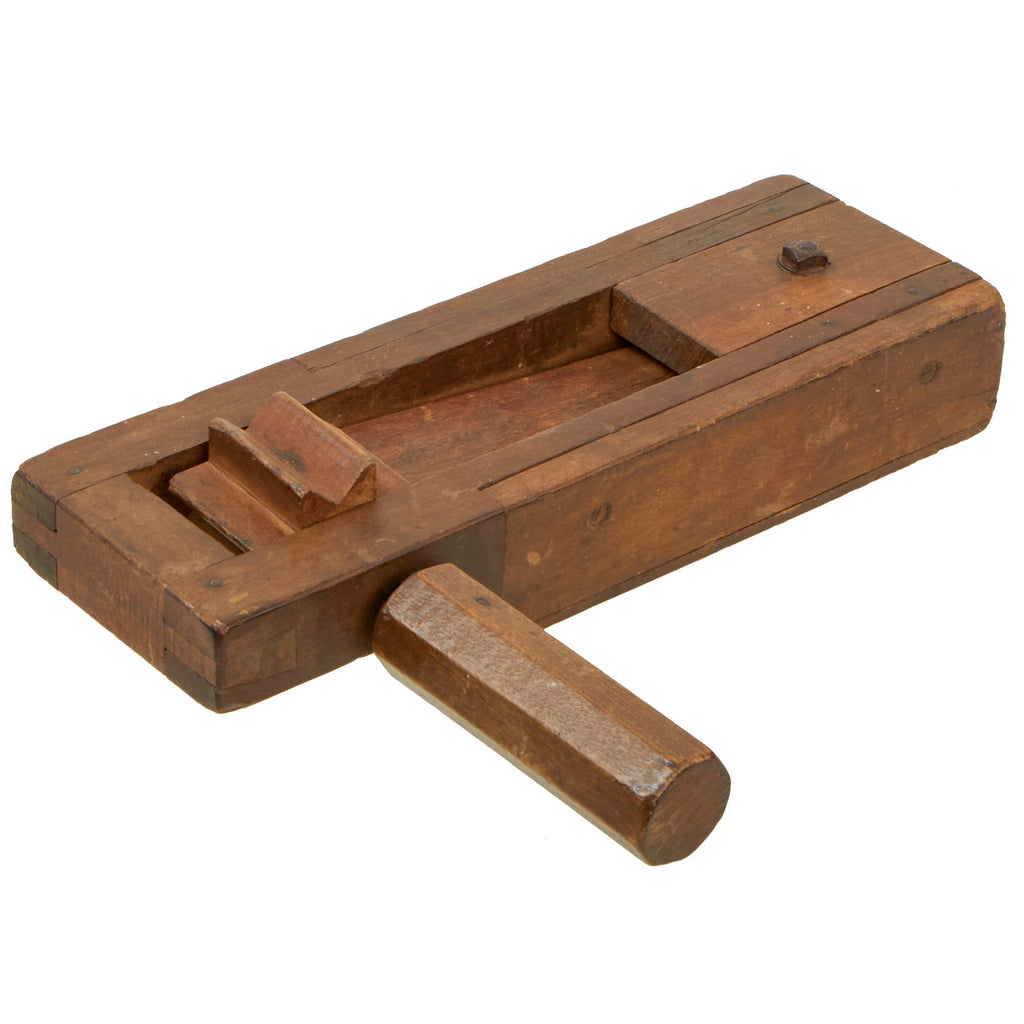Item Description
Original Item: Only One Available. In WWI poison gas was introduced, now totally outlawed as inhumane. With all the noise in the trenches, the wooden gas rattle was adopted to alert soldiers in the trenches of an impending attack. These rattles had a totally unique sound, and were quite jarring, being able to be heard above the din of war.
The fear of course once WWII began was that the NSDAP War machine would reintroduce poison gas, which would be delivered by aerial bombardment. We now know that no one used poison gas as a military weapon in WW2, so the Gas Rattles were instead used to warn people to get to shelters before air raids commenced. They became somewhat redundant once the country was covered by Air Raid sirens, but nevertheless in the early days every resource was put to use.
This example is in good condition but is unfortunately quite worn but unbroken. The thin wood portion is split in multiple places, so we recommend that you do not use this. It is still very sturdy and does appear to function still, we just did not test it out due to the cracks. The side of the body is marked with 42nd BN.
Comes more than ready for display.
The 42nd Battalion was raised at Enoggera near Brisbane, Queensland, in December 1915 as part of the Australian Imperial Force (AIF) during the First World War. Due to sharing its numerical designation with the famous Scottish regiment, the battalion became known as the "Australian Black Watch". Under the command of Lieutenant Colonel Arthur Woolcock the battalion was part of the 11th Brigade of the 3rd Division, which was formed in Australia as part of an expansion of the AIF following the Gallipoli campaign. After completing training in Australia and Britain the battalion deployed to France on 26 November 1916 to fight against German forces on the Western Front, taking up positions on the frontline in December where it endured the winter of 1916–17, as well as completing further training and labouring tasks in the rear areas when not in the line.
During 1917 the 3rd Division operated in the Ypres sector in Belgium, with the battalion taking part in the battle at Messines in June, Warneton in late July, Broodseinde in early October, and then at Passchendaele on 12 October where it sustained heavy casualties, mainly due to German gas attacks. The battalion remained in Belgium for the following five months, rotating between the front and rear areas. In March 1918, it moved to France to help blunt the German spring offensive, repelling a German attack around Morlancourt. During the lull that followed, the battalion was subsequently involved in the Battle of Hamel on 4 July 1918. When the Allies launched their own offensive in August, the 42nd Battalion was involved in the initial attack around Amiens and then the subsequent advance that followed as the Allies attempted to penetrate the Hindenburg Line. Its final involvement in the fighting came during the fighting at St Quentin Canal during the period 29 September to 2 October. After this, the Australian Corps was withdrawn from the line for rest and reorganisation, and the 42nd Battalion was disbanded on 22 October 1918 to provide reinforcements for other AIF units, which had suffered heavy casualties throughout the year. During its service the battalion sustained a total of 544 killed and 1,450 wounded. The battalion's last man (of 2,954), Sergeant Robert S. Melloy, died on 23 January 1995, at age 97.
- This product is available for international shipping.
- Eligible for all payments - Visa, Mastercard, Discover, AMEX, Paypal & Sezzle









